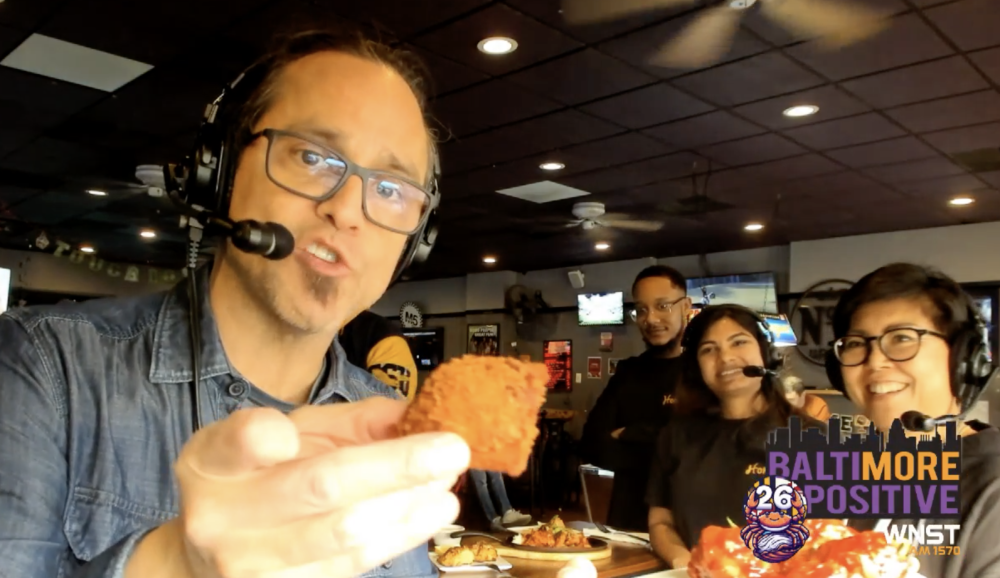“I’m not here to go to another Pro Bowl. I’m not here to make another All-Pro team, although that would be nice. I’m here to help the Ravens make the playoffs and to go from there. That’s my sole purpose for being here. If I help the Ravens to the playoffs, that would say more about who I am, the player and leader I am, than if I make the Pro Bowl.”
– Shannon Sharpe, upon signing with the Ravens in Owings Mills, Md., Spring 2000
“I’m playing for the ring. I’m trying to get back to the playoffs and trying to get that ring. We play this game for one reason and that’s to get to the Super Bowl.”
– Rod Woodson, at the Ravens’ training camp in Westminster, Md., Summer 2000
WHY WOULD ANYONE HEADED TO the Pro Football Hall of Fame stop off in Baltimore?
Sure, Baltimore has some nice NFL history and decent crab cakes, but to come play for the lowly Ravens? Why?
That was the conventional wisdom of the fan base and even of many players in the league, who couldn’t find Baltimore on an NFL map as recently as 1996. It’s not like anyone spent their childhood dreaming of playing for the Baltimore Ravens.
The Colts? Maybe, if they were old enough.
But the Ravens weren’t even an entity. They were more like a joke.
From a personal perspective, there were times on road trips in 1997 and 1998 when I would take groups of traveling fans into a town to see the Ravens play and people had no idea they were even a football team, let alone an NFL team.
“That a pretty purple jacket,” the locals would say. “Who are the Ravens?”
My personal favorite was, “Is that a hockey team?”
Opposing teams’ radio broadcasters poked fun at the team, calling them the “Raisins.”
Other Art Modell bashers simply referred to them as the Browns or the Traitors or the Modells.
Even weathered NFL referees and old-time television announcers would still call them the Colts, despite having no physical resemblance at all to the city’s football team of history.
They were a scarred and moved franchise with owners who had no money. There was no tradition of winning. The team’s purple colors and “Flying B” logo were completely unrecognizable to anyone outside of Baltimore. Hell, two years into their existence, their original logo was in jeopardy of being taken away and being dragged through the court system due to a third-party claim of ownership.
Baltimore was the NFL’s version of Siberia.
If your name is Rod Woodson or Shannon Sharpe, and your ticket to Canton, Ohio, and the Pro Football Hall of Fame has all-but been punched, couldn’t you find a better place to collect a paycheck? A place where there was some history? A place where you might win a championship before going to Canton?
In retrospect, winning a championship without the pair of legends would have been damned-near impossible. But during the team’s 11-game unbeaten run toward an eventual Super Bowl championship, it became very clear that the pair of future Hall of Famers saw the future of the Baltimore Ravens very clearly when they arrived, because they knew they could have a positive effect on it.
By the time Sharpe came aboard for the 2000 season, the groundwork for welcoming a legend had already been laid. Woodson had done that when times were much tougher, before the 1998 season, joining a team that was coming off 4-12 and 6-9-1 seasons.
At the time, Woodson was almost universally regarded as a washed up cornerback. In the parlance of the sports fan, “He had lost a step.” And that’s one more than you can afford to lose when you’re playing cornerback in the NFL.
He was coming off a 1997 season in San Francisco that was frustrating and lonely. Still a resident of Pittsburgh, where he played the first 10 years of his career, he moved to the Bay Area temporarily to chase a Super Bowl ring with the vaunted 49ers. His one-year tenure ended with a 23-10 loss to the Green Bay Packers in the NFC Championship Game in January 1998. He was released three weeks later for two reasons: He was too expensive and he was not good enough. While spending those five months chasing a championship in California, he missed his wife and kids and wanted to come as close to home as possible to end his career.
Conventional wisdom in the NFL says that after a major injury, you don’t fully regain your skills until your second season. That first year is just for finding your game again and adjusting to life after rehab.
Before the Steelers’ AFC Championship run in 1995 could even begin, Woodson suffered a torn anterior cruciate ligament in the first game of the season and watched from the sideline for an entire season as his team marched toward Super Bowl XXX in Tempe, Ariz. He persuaded the Steelers front office not to put him on the injured reserve list, which would have made him ineligible for postseason play.
HEAR NESTOR’S CONVERSATION WITH SHANNON SHARPE ON THE DAY HE SIGNED WITH THE RAVENS HERE:

“Bill (Cowher) was convinced if we got to the Super Bowl that Rod would play,” said Ravens defensive coordinator Marvin Lewis, who was the Steelers’ linebackers coach that season before coming to Baltimore. “We didn’t know how well he’d be, but we knew he’d get there if we did.”
It started in the meetings in December, where he would show up and just sit in the back of the room. By early January he began making walkthroughs and playing on the scout team. The week before the Super Bowl he pronounced himself fit. On January 28,1996 – five years to the day before he would ever realize his goal of a Super Bowl championship ring – Rod Woodson became the first player in NFL history to suffer a torn ACL and return to the field in the same season. He played in a few nickel packages and even batted down a pass in Super Bowl XXX in Tempe.
Determination and intestinal fortitude were not going to be a problem with Woodson.



























